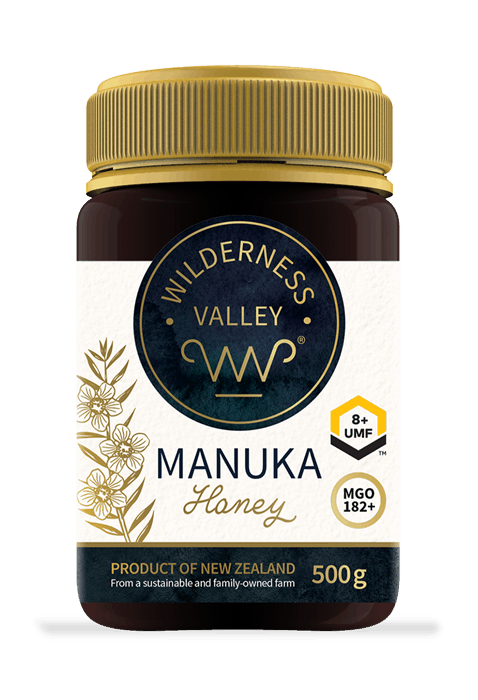Manuka Honey is enjoying a moment as a trendy sweetener. But, is it worth the hefty price tag and are you getting what you pay for?
What is Manuka Honey?
Manuka Honey comes from honeybees pollinating the Leptospermum, a shrub common in New Zealand and southeast Australia. When the shrub is in bloom, bees flock to the Manuka to gather its pollen and nectar.
The bees use the pollen and nectar to make honey. Manuka Honey has a dark caramel color and is prized for its earthy flavor and medicinal properties.
Why is Manuka Honey so popular?

Honey is known, of course, as a sweetener. Most of the honey sold in supermarkets is pasteurized and homogenized with little flavor differences between brands.
But, raw honey can have flavor profiles ranging from floral to fruity or herbaceous to nutty. The flavor of the honey depends on the flower where the bee gathered the pollen and nectar. So, just as different flowers have different aromas, honey from different flowers have different tastes.
Manuka Honey is prized for its earthy herbaceous flavor, but it should be noted that the differing flavor profiles of honey can be muted or completely lost when added to a hot beverage like tea.
Claims have been made about Manuka Honey’s medicinal value. You’ll see ads saying the honey can heal wounds, cure acne, prevent ulcers and even cure Cystic Fibrosis. None of these claims have been proven scientifically. But, that doesn’t stop companies from making the claims.
Because of these advertising campaigns, the honey’s unique flavor, and the relative difficulty of extracting it from bee hives (Makuka Honey is especially viscous), Manuka Honey is incredibly expensive. Whereas you can get a pound of local honey for eight bucks or so, I’ve seen Manuka Honey advertised for up to $600!
Manuka Honey fraud
With eye popping prices like that, its not surprising that shady companies would try to cash in.
In 2019, a New Zealand company was fined $260,000 NZD and the owner’s son fined an additional $112,500 NZD for adding ingredients to their so-called Manuka Honey to increase profits. Worst of all, the chemicals they added weren’t food safe!
Research in the United States have shown that 50% of the Manuka Honey studied didn’t contain the advertised amount of Manuka Honey or contained no Manuka Honey at all.
How to buy real Manuka Honey
If you’re looking to buy real Manuka Honey, here’s what to look for.
UMF label

The Unique Manuka Factor (UMF) is the best way to make sure you’re getting real Manuka Honey.
An independent organization looks at honey with chemical and DNA tests to prove it is legit Manuka Honey. The honey is then rated based on the amount of Methylglyoxal, a chemical compound found in Manuka Honey.
However, it should be noted that Methylglyoxal can be added to non-Manuka Honey. So, the MG (Methylglyoxal) test alone will not tell you if the honey is authentic Manuka.
In addition, K Factor and TA (Total Acidity) tests are useless in determining real Manuka Honey.
Should you buy Manuka Honey?
The choice is yours, of course. But, trying Manuka Honey for its unique and heady flavor might be an experience you want to have. Just make sure you’re getting the real thing.
About the Author

Brent Petersen is the Editor-in-Chief of Destination Eat Drink. He currently resides in Setubal, Portugal. Brent has written the novel “Truffle Hunt” (Eckhartz Press) and the short story collection “That Bird.” He’s also written dozens of foodie travel guides to cities around the world on Destination Eat Drink, including in-depth eating and drinking guides to Lisbon, Porto, Sintra, Monsaraz, and Evora in Portugal. Brent’s podcast, also called Destination Eat Drink, is available on all major podcasting platforms and is distributed by the Radio Misfits Podcast Network.
